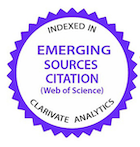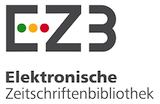COMPARISON BETWEEN THE LABORATORY AND PORTABLE METHODS IN THE GLYCEMIC ANALYSIS IN CATS WITH CENTRAL VENOUS AND CAPILLARY BLOOD SAMPLES
DOI:
https://doi.org/10.1590/1089-6891v16i231266Keywords:
Animal SanityAbstract
The objective of this study was to compare the efficacy of portable blood glucose measurement method in relation to the laboratory reference method, using central venous and capillary blood samples from 20 cats. The value obtained by the laboratory method using central venous blood sample was considered as the standard reference value. Other two values were obtained from the portable blood glucose meter, in which a sample from the same central venous blood and another one sample from capillary blood were used. For the 20 cats, the blood glucose results obtained by the laboratory method had an average of 80mg/dL; and the results found by the glucometer had an average of 84.1mg/dL with central venous blood and of 73.1mg/dL with capillary blood. The glycemic averages obtained by the glucometer with both blood samples compared to that achieved by the laboratory method resulted in variations below the maximum established (20%) by associations that regulate portable glucometers and by the organization for standardization, as well as the variation between the glycemic averages obtained by the glucometer using different blood samples. In the comparative analysis, there was no significant difference between the methods (p<0.05). In conclusion, the portable glucometer is effective in measuring blood glucose in cats, both from central venous blood and capillary blood samples.
Keywords: cat, glucometer, glucose, measurement.
Downloads
Published
How to Cite
Issue
Section
License
Copyright (c) 2015 Brazilian Animal Science/ Ciência Animal Brasileira

This work is licensed under a Creative Commons Attribution 4.0 International License.
Authors who publish with this journal agree to the following terms:
- Authors retain copyright and grant the journal right of first publication with the work simultaneously licensed under a Creative Commons Attribution License that allows others to share the work with an acknowledgement of the work's authorship and initial publication in this journal.
- Authors are able to enter into separate, additional contractual arrangements for the non-exclusive distribution of the journal's published version of the work (e.g., post it to an institutional repository or publish it in a book), with an acknowledgement of its initial publication in this journal.
- Authors are permitted and encouraged to post their work online (e.g. in institutional repositories or on their website) prior to and during the submission process, as it can lead to productive exchanges, as well as earlier and greater citation of published work (See The Effect of Open Access).































